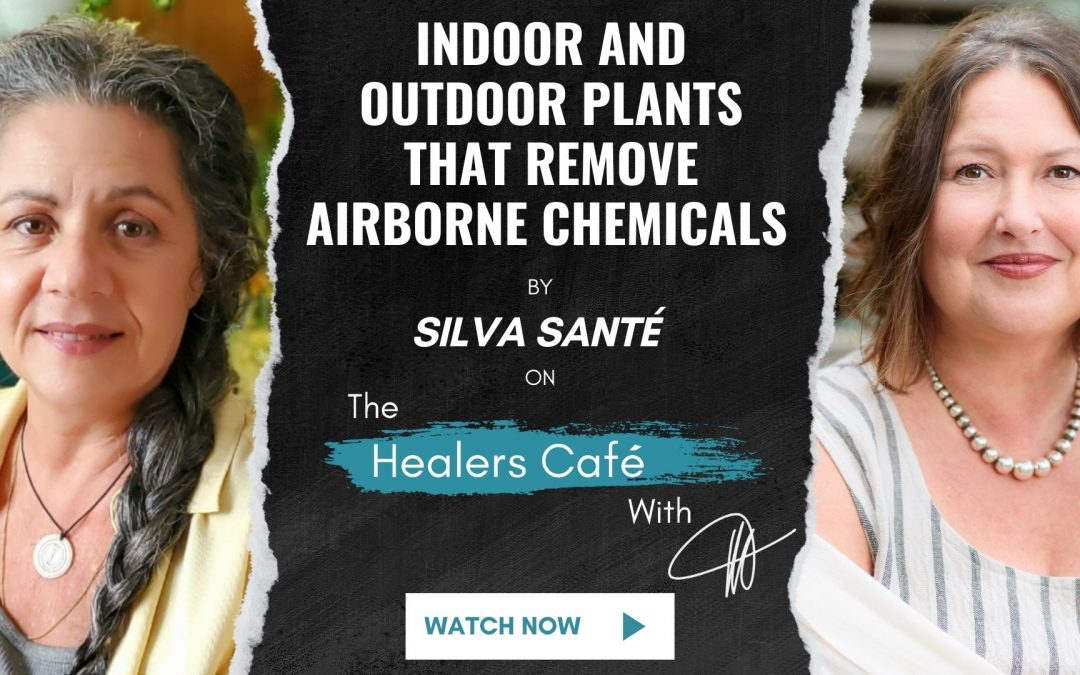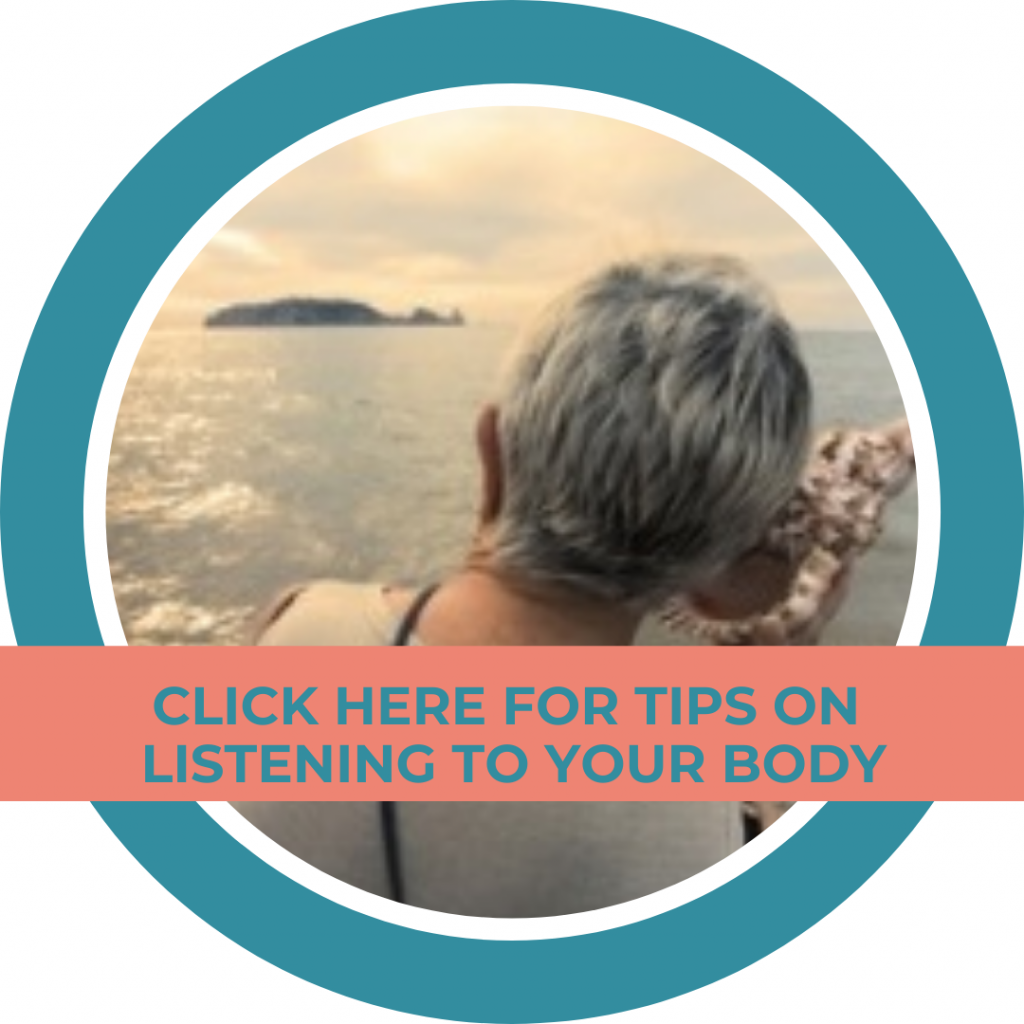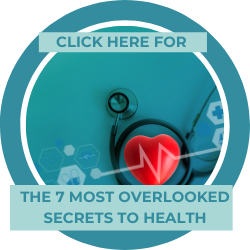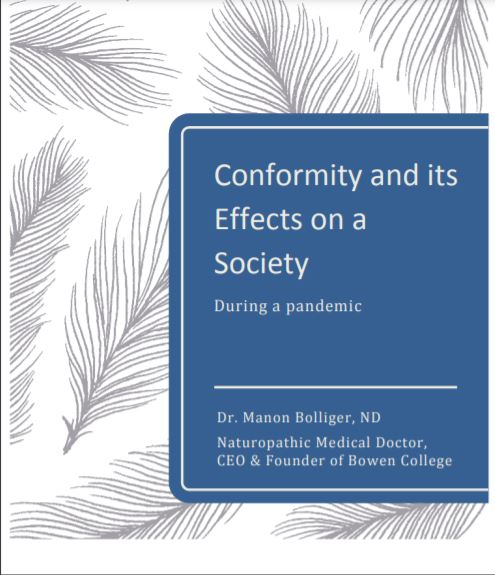Indoor and Outdoor Plants that Remove Airborne Chemicals by Silva Santé on The Healers Café with Manon Bolliger
In this episode of The Healers Café, Manon Bolliger (facilitator and retired naturopath with 30+ years of practice) speaks with Silva Santé, Natural Consultant and Author.
Highlights from today’s episode include:
Silva Santé
they conducted a study on plants that didn’t need a lot of light to grow and could eliminate toxic substances created by the equipment in these space stations. Their findings showed that indoor plants can actually clean air of cancer causing volatile organic compounds like formaldehyde, and benzene. These chemical compounds are actually found everywhere.
Silva Santé
So, there’s more energy basically, I would say, in a fresh sprig of mint, or basil, or anything that you pick from your garden, basically, than there is in a whole processed meal.
– – – – –
Silva Santé
if you don’t have the time and space, then at least grow some flowers and grow some herbs. And that will help a lot. And it aids a lot of things in your life, digestion and gives your body real nutrients and vitamins and minerals that it actually needs.
About Silva Santé:
A Natural Health Consultant and author. I developed the Silva Santé System – a Phytoholistic© Approach to better health, and increased quality of life. By applying some very simple foundational shifts, this approach can help you create an environment that strengthens your own foundation for improved function of immune, digestive, and nervous systems. Since 1996, I’ve specialized in the use of therapeutic plants in various forms and their incorporation in the preparation of daily meals. In 2019, I was a guest on a talk show called Bienvenue chez Cécile Diane which airs on CTRB TV; a French station in Quebec Canada where I showcased a few of my recipes. Due to popular demand, I documented these savory recipes and more! The Silva Santé cookbook is chock-full of information on the benefits of all the ingredients used in the recipes, a section on essential oils, plus a chart of edible flowers. Now available in French and English.
Les recettes Silva Santé Silva Santé Recipes.
– Facebook | LinkedIn | Book of Recipes
About Manon Bolliger
As a recently De-Registered board-certified naturopathic physician & in practice since 1992, I’ve seen an average of 150 patients per week and have helped people ranging from rural farmers in Nova Scotia to stressed out CEOs in Toronto to tri-athletes here in Vancouver.
My resolve to educate, empower and engage people to take charge of their own health is evident in my best-selling books: ‘What Patients Don’t Say if Doctors Don’t Ask: The Mindful Patient-Doctor Relationship’ and ‘A Healer in Every Household: Simple Solutions for Stress’. I also teach BowenFirst™ Therapy through Bowen College and hold transformational workshops to achieve these goals.
So, when I share with you that LISTENING to Your body is a game changer in the healing process, I am speaking from expertise and direct experience”.
Mission: A Healer in Every Household!
For more great information to go to her weekly blog: http://bowencollege.com/blog.
For tips on health & healing go to: https://www.drmanonbolliger.com/tips
SOCIAL MEDIA:
– Linktr.ee | Rumble | Gettr | Facebook | Instagram | LinkedIn | YouTube | Twitter |
About The Healers Café:
Manon’s show is the #1 show for medical practitioners and holistic healers to have heart to heart conversations about their day to day lives.
Follow us on social media! https://www.facebook.com/thehealerscafe
TRANSCRIPT
Welcome to the Healers Café. Conversations on health and healing with Manon Bolliger. A retired and deregistered naturopathic physician with 30 plus years of experience. Here, you will discover engaging and informative conversations between experienced healers, covering all aspects of healing, the personal journey, the journey of the practitioner, and the amazing possibilities for our own body, and spirit.
Manon Bolliger 00:41
So, welcome to the Healers Café, and today I have with me Silvana Santé or Silva Santé, and this is actually our 2nd interview, because we ran out of time to talk about some of the important things that she wanted to share, like the high benefit plants listed in an in a NASA study, which are really easy maintenance, and that you can, you know, look after indoors. She prepared a special PowerPoint presentation to kind of go through all of that. So, those of you who are listening to the audio, you can always go to my channel on Rumble and YouTube. And, and otherwise, we’ll make it as explicit as possible. So, welcome again, and I’m looking forward to learning more about plants.
Silva Santé 01:40
Thank you, Manon. Thank you for having me. This is wonderful. It’s So, nice to be back, we had So, much to talk about last time, that it was just not enough time, we had to, we had to do this again. And it’s really a pleasure to be back here. So, I’m just gonna jump into houseplants because that’s where we left off last time. And I wanted to touch base a little bit on that. But then I also, want to jump into some spring flowers to look for, because spring is on its way and or it’s like already here, depending on what part of the country or …
Read more...
planet you’re on.
Manon Bolliger 02:18
You mean like spring edible flowers, or medicinal flowers that…?
Silva Santé 02:22
Medicinal flowers, therapeutic, and just very high in nutrition.
Manon Bolliger 02:28
Excellent.
Silva Santé 02:30
So, I’m gonna start with the plants. And I’m just gonna share screen here. You need to purify and oxygenate your indoor air. And in 1989, NASA researchers were looking for ways to effectively detoxify the Air and Space Station environments. So, they conducted a study on plants that didn’t need a lot of light to grow and could eliminate toxic substances created by the equipment in these space stations. Their findings showed that indoor plants can actually clean air of cancer causing volatile organic compounds like formaldehyde, and benzene. These chemical compounds are actually found everywhere. And so, we’re going to take a look a little bit at the next slide at some of the plants that are easy to take care of. And these are some of my favorite because they’re nontoxic to animals to pets. So, there’s a long list of plants that are actually very effective, but these three are safe for pets. So, the palm plant it filters formaldehyde, xylene, Toluene, benzene, and trichloroethylene from your environment. And it’s a beautiful plant. I’ve got it growing behind me. I’ll show you guys a little bit more about the plants behind me. Then there’s the common spider plant which is very useful for removing carbon monoxide and Also, formaldehyde. xylene. and Toluene. And then the rubber tree plant, it’s an awesome one because that one really focuses on removing formaldehyde from the air. So…
Manon Bolliger 04:19
So, where do we get all this formaldehyde?
Silva Santé 04:24
So, that’s just it. You might be asking yourself, like, where are we getting all of this stuff? Well, these compounds are found just about everywhere in our environment. They are found in they’re found in plastic packaging, they’re found in furniture, they’re found in carpets, paints, varnishes, cleaning products, sometimes in makeup. You know, deodorants, they’re just everywhere. For instance, formaldehyde, that one is naturally present in small amounts in some fruits and vegetables, and meats and seafood, but the industry is just like overusing it, they use it as preservative. And in So, many products, antiseptics, medicines, cosmetics, soaps, shampoos, lotions, sunscreens, in many of the commercial cleaning products and more. And this starts to add up. It really does, it’s already been confirmed that a high exposure to formaldehyde is has been linked to cancer in humans. And that’s just formaldehyde. Now let’s look at toluene that affects the brain and the nervous system. And it can be found in paint thinners, paint brushes, cleaners, nail polish glues, inks, stain removers. And xylene also, can be found in these same household products and it causes headaches, dizziness, and confusion. Benzene can also, cause dizziness as well as sleepiness and convulsions. And this is taken from the CDC website right off word for word. They say like that it’s known that chronic exposure is linked to leukemia and other blood disorders. So, it’s found in in hand sanitizers spray, like spray sunblock’s deodorants, as I was saying, a lot of dry shampoos and conditioners that come in aerosol, anything aerosol, basically will carry benzene will have benzene in it. Trichloroethylene…
Manon Bolliger 06:43
Clean their houses by spraying and for example, air fresheners they’re actually not at all freshening the air, they’re putting toxins right into the air they breathe, right?
Silva Santé 06:57
Precisely. Precisely. So, and based on a study published on the nih.gov site, back in 2013. They said trichloroethylene, is carcinogenic to humans by all routes of exposure, and poses a potential human health hazard for toxicity to the central nervous system, the kidneys, the liver, the immune system, male reproductive system, and the developing embryo or fetus in pregnant women. So, and of course, there’s carbon monoxide in a lot of things as well. And that causes a host of problems including death. So, you know…the FDA approves these products as safe because of the negligible amounts in each one of their products. But the combination as you were saying that we’re walking around spraying our homes with it, and we’re putting it on ourselves in cosmetics and in deodorants. And, well, that’s just…it’s too much that combination that we use on a on a daily level just adds up to levels of toxicity that are too high for the body to deal with. So, and we don’t see it, you know, but if we did these poisons, would literally appear like a toxic soup that we breathe in, and we’re just surrounded by. So, we may not know it, but we might be also, culprits by adding things in our daily usage without knowing and this further adds to the toxic overload and bombards our body some more so, then we get all these symptoms and we’ve got like headaches, and sleep issues, and digestive issues, and inflammation, and allergies, and So, many other things that will just kind of block our happiness, our life wellbeing. So, and the truth…So, here’s the truth bomb. The truth is that big pharma knew this already. And that’s what helped them to market all the allergy medicines on the market and all the different headache medicines and just the host of medications that are over the counter available to us. Because these symptoms exist in almost everyone that uses these products. That’s clearly a link. You know.
Manon Bolliger 09:23
Well, I think that’s their marketing, you know, you create the problem for which you also, then create the solution right. And it’s been repeated in history even very recently, and you know, you talk about formaldehyde it’s actually in all the childhood vaccines.
Silva Santé 09:45
Oh, yes. Yeah, it is, you’re right.
Manon Bolliger 09:48
Yeah, it’s in small amounts. So, they say well, what amount you know, the last experience I had with formaldehyde directly was working on a cadaver as part of my training. You know, and that’s very strong, you know, but when you think that all these small doses they accumulate, you know, in your body, you’re breathing it in, you know, all of that. So, these plants, then they help, basically processing the…at least what’s available in the air to help you.
Silva Santé 10:24
Well, they kind of remove, they absorb all of those toxic chemicals. You need a lot of them, that’s why…
Manon Bolliger 10:33
You’re in a garden.
Silva Santé 10:36
I love my plants. And in the summer, they do go outside, but I’m mostly outside. So, I only leave a few, a few that are less tolerant to light, which, you know, like the big palm tree, this one I got, it was like tiny. And this was like three years ago. It just grows, it absorbs, the more you know, it needs to absorb, the more it grows, because it’s doing its work. So, it’s…they’re happy plants, because they’re, they’re doing what they need to do.
Manon Bolliger 11:06
Right.
Silva Santé 11:08
So, there’s other ways as well that we can improve, this isn’t…the good news is if we stop using those products, we’re kind of stopping that perpetuating problem, right? So, the power is in our hands, and we make informed decisions, and there’s quite a few things that we can do to improve the indoor quality of our air. So, essential oils, you were saying spraying all over the place. Well, essential oils is a wonderful way to clean your air, and disinfect, oxygenate, just put a nice, balanced amount of moisture in the air with an antiseptic, you know, not something that’s going to give you a headache afterwards. Not anything that’s going to cause you, you know, burning in your nostrils or in your, in your lungs. So, anyway, I’ve got a lot of new information that I’m going to be publishing in my new book. And it’s a guide that’s upcoming. And it’s full of easy solutions to improve the quality of your life. It will include all of the…many of the recipes, the newer recipes I’ve got. It will also, include many ways to deal with the EMFs and to clean your indoor air. And it will also, identify some of the issues with like, easy to do questionnaires for you to be able to identify where the problems are and what you need to do to fix it. So, we’ll look for that in the near future. And those are the three plants that I wanted to talk about. There was a couple that was…a couple more worth mention. Oh yeah, the chrysanthemum really, really does everything that those last three plants do. But they’re not safe for pets. So, if you don’t have pets, get yourself a bunch of chrysanthemums, they will do the same thing all of my plants are doing right here. They’re very, very effective. But if you have pets, you can’t do that. So, next, I wanted to talk a little bit about spring. Because you know, the spring flowers and the ones to harvest like we were talking about. That’s a big part of my holistic approach as well. Because it helps to cleanse without you even doing a lot of work, cleanse, bring up the nutritional value in your daily life, you know. And So, it’s been I’ve I really enjoyed this I heard a speaker and advocate of natural healing, speaking about the nature of the relationship that we have with plants. And he eloquently explained that it’s been observed in nature, that the exchange between animals and the plants that they eat are actually a cellular conversation. So, the cellular and molecular structure of the plant carries coded messages that it gets from the soil and the environmental elements that it grew in. It then relays that cellular message to anyone who eats it and prepares the body for the you know the coming environmental conditions of that region. So, that’s such a good reason to eat local and to eat fresh. Fresh food from nature is literally information being transmitted to our cells, and information that our bodies can understand. Processed foods, on the other hand, are complicated and confusing for the body and for your cells to decipher what to do with all these rearranged molecules. It just it slows the natural metabolic process, and it you know confuses your body. Not only is your body trying to find out, like what it can extract nutritionally, it’s also, trying to figure out how to, like how to digest this and how to get rid of what it doesn’t need. So, more often than not, there’s little to no nutritional value. And processed foods are just literally exhausting your body and generally using up more energy than they provide. So, over time, you’re kind of being…your body’s more and more depleted. So, there’s more energy basically, I would say, in a fresh sprig of mint, or basil, or anything that you pick from your garden, basically, than there is in a whole processed meal. Or restaurant meal sometimes has zero nutritional value to it, you know. So, my approach is, if you have the time and space, have a little garden, you know, there’s nothing like a fresh tomato. Storebought, even if it’s organic, does not taste the same. There’s nothing more delicious than a juicy fresh tomato. And if you don’t have the time and space, then at least grow some flowers and grow some herbs. And that will help a lot. And it aids a lot of things in your life, digestion and gives your body real nutrients and vitamins and minerals that it actually needs. And there’s nothing complicated about it, your body knows exactly what to extract from it. And just as importantly, it knows exactly how to discard what it doesn’t need. So, also, don’t use chemicals. Everyone, you know, knows that but we’re still kind of seeing people using them. I don’t get that. They’re harmful, not only to the butterflies and the bees and all the insects that thrive on off of that they’re also very harmful to our pets, and they’re very harmful to us and our health. The glyphosate have been linked to Parkinson’s, cancer and lymphoma. And it’s, you know, it’s showing more and more. So, the blooms I want to talk about there’s some of them will bloom all summer long, and others will not for instance and I’m gonna go to my share screen again.
Manon Bolliger 17:35
Manon Bolliger here and I want to thank you for taking actionable steps towards engaging your healing journey, and helping others discover their path by watching, sharing, subscribing, and reviewing these podcasts. Every review and share helps spread the word these different perspectives and choices and options for healing. And to thank you I’d like to invite you to sign up to my free seven sequence email tips on health and healing for everyday life. You can go to https://drmanonbolliger.com/tips, thanks So, much.
Silva Santé 18:16
Here’s one of the plants or the flowers I should say that blooms for a very short time in the spring only 10 to 14 days. Interestingly, the bloom precedes any foliar growth, which means it’s the first sprouting bud. So, this makes this Golden Blossom a therapeutic powerhouse packed with the plants vital force from all winter. So, it’s an amazing superfood that is incredibly high antioxidant. It’s anti microbial, a broad spectrum So, it’s all the antes that’s what I like to say antiviral, antibacterial, antifungal. It’s effective as an anti inflammatory, antioxidant. Rich in oleanolic acid and it’s just an amazing superfood. It helps alleviate inflammation and boosts your immune system. And I harvest it and I add it and on a cold winter day I add it to a handful…just a handful to my soups or a tea it’s really delicious and you can just feel the energy seep back into your body if you have a cold or any kind of…
Manon Bolliger 19:31
So, would you be drying it and then or freezing it for the winter or?
Silva Santé 19:37
I dehydrate them in a dehydrator.
Manon Bolliger 19:39
Dehydrate. Okay, yeah.
Silva Santé 19:42
Do you just see the screen my PowerPoint or do you see me as well?
Manon Bolliger 19:46
No, I see you know the small version? Yes.
Silva Santé 19:49
Okay, So, I have a little bit left of my dehydrated Forsythia. Right and that’s all I have left. I usually have about three to four jars of this at the beginning of the season. And I’m out there harvesting it rain or shine because again, it’s only around for 10 to 14 days of the whole year. So, gotta jump on it when it’s there. But it is really, really a power packed little flower and really worthwhile. It tastes delicious too. It’s sweet and nectar like with a, just a tinge of Jasmine. So, the next one is, of course dandelions. I think I spoke about it last time, but I want to remind everyone that No Mow May is a thing. Don’t mow your lawn, take it easy, you know, give yourself a break. Wait till June to do your first mowing. This helps the bee population, and it helps the butterflies it helps everything basically to just grow in properly. And sorry, Dandelions. One of the things I wanted to mention I almost forgot is like a lot of people ask me, how do you eat them? How do you offset the bitter taste? Well, I personally like the bitter taste, but I have friends that don’t So, I have made some recipes that offset that bitter taste. One of them is dandelion chips. And the other one is marinated dandelion leaves. So, both these recipes offset the bitter taste with a sweet sour or a salty complimentary flavor. And it’s delicious really. And you’ll find those in my cookbook, So, I’ll let you know where to get that later. Moving to the next slide. So, we’ve got some super, super foods here. We’ve got the Daylily which is very rich in protein and vitamin C, and it has a delicious peppery taste, but with a buttery little flavor to it. The nasturtium I like to grow as much as possible everywhere. It is such a helpful plant and a natural antibiotic. So, it ward’s off viruses and helps sore throat helps clear the lungs. And it’s just a really delicious peppery little flower with a kind of a sweetness behind it. The Jolly Jump Ups they are So, gorgeous. And they can go anywhere from garnishing your salad to garnishing desserts or cocktails even on a nice sunny afternoon. So, it’s really cute, but yet it’s such a powerful little flower and it packs a punch. It contains powerful anti inflammatory and anti fungal properties. It relieves whooping cough, asthma and anxiety. Medicinally in the past it has been used as aspirin. And if applied on the skin, it helps wounds heal, and it helps dry skin and acne. And red clover also, is very good for skin. But this one contains isoflavones that are compounds structurally similar to estrogen. So, they really help symptoms of menopause. They also, help symptoms of osteoporosis, and they relieve asthma and whooping cough as well. So, just by starting to add some flowers to your daily intake and walking through your garden and picking little things and you can just eat them fresh if you want. It’s just an easy way to increase your health and vitality. And it’s just as easy as garnishing your dishes. So, a lot of these lists can be also, found on the nih.gov website. And there’s a lot more flowers if you want to look at them, too. There’s tulips, calendula, Cosmo’s, Malayan and I spoke about last time because I was showing the leaf but the Malayan flower itself that is beautiful and tasty and can be eaten as well. So, and hopefully this will kind of motivate people to make little beautiful salads and delicious dishes of their own. These are some of the salads that I’ve prepared in the past. So, again, you’ll find a lot of this information in my cookbook, and I’d like to move on now to you know, preparing a little bit for the summer months, because it’s coming, the heat waves are coming So, how do we prepare for the summer months? I can’t emphasize enough stay hydrated and drink water all the time. What I like to do is oh and of course, wear a hat if you’re out between the hours of 11 and 3 to avoid heatstroke, especially if you’re starting a little garden of your own there. So, to moisturize your body, as much as you can, also, is important. Try coconut oil as it contains a natural sunscreen, an SPF of two to eight. It is a delicious way to moisturize your whole body and it’s gentle enough to be used on the delicate tissues around your eyes, eyelids. It actually strengthens eyelashes. And you know, with the naturally built in sunscreen, you’re always ready for the sun, and your skin will thank you for it. Now, there’s a lot of other benefits to coconut butter. It’s an amazing substance, and MCT. It’s an MCT oil, its medium chain triglyceride oil, which means it’s easy fuel for your body to burn without turning to fat. And in a study published in the American Journal of Clinical Nutrition MCT’s burn 3x more calories for six hours after a meal than long chain triglycerides. So, eating a spoonful with each meal can actually help improve digestion and can help you burn fat for a longer period of time. It also, contains Omega 3’s, which lowers risk of heart disease and protects against depression, dementia, cancer and arthritis. And it can help improve a sluggish thyroid. It’s one of the best oils to cook with. And it’s an amazing oil to condition your hair with. So, you know, just eat it, cook with it, put it on your skin and hair. Just let it love your skin and let yourself love it. So, if you need a higher SPF, though, there are oils that are available that actually provide that. As you can see on the PowerPoint, there’s avocado oil, which goes up to 15, carrot seed oil which goes up to 40 SPF, and raspberry oil at the highest goes to 50 SPF, for the best sun protection. So, the next thing I wanted to share with you is where to get these oils. Because for me, the only place I go to is is really one of the highest quality places that I’ve ever had the privilege and the pleasure of trying and using. So, there is Ziadaroma.com. And these oils will help to protect your skin. And by the way, they ship all over the world. And they offer a myriad of choices. I use many of their products in my remedies for my clients, for my family, friends, and for myself. So, every one of these products I’ve used is top notch and simply sublime. Do yourself a favor, it’ll be the best gift you’ll ever give yourself and your loved ones. So, I wanted to also, talk a little bit about the hydrolats they have, because I use two of them in particular. And I’ll tell you why the Hawaiian sandalwood tree and the hydrolat from sandalwood. Well, that one helps you keep cool in the summer. And I want to tell you a bit about it. It dates back to very ancient, ancient times. It was said to be used by the nomads that crossed the desert, because it had the ability to literally lower your body temperature and keep your body from overheating. So, I can truly attest to it because I use it. It really works. It helped me not only get through heat waves, it has helped me get through my menopause and my hot flashes. And it I found in the summer actually it works very well to also, ward off bugs. So, we’re going to be making I think all these links available in at the at the end of the show, right?
Manon Bolliger 29:07
Yeah, for sure.
Silva Santé 29:08
So, rose oil, sorry not rose oil, but Rosewater is another one that I absolutely love, because it is a key ingredient in one of my recipes, but I also, use it to cool my skin. It’s calming and it smells divine. I keep both of these in the refrigerator in the summer and take them out randomly and just spray them all over. Because they are just So, wonderful. And they just help alleviate all the heat So, well. So, that’s some of the stuff that I wanted to share.
Manon Bolliger 29:48
Great.
Silva Santé 29:48
And I wanted of course to remind everyone that my book is available on several marketplaces, on Amazon, in French, and in English. Oops, oops, let’s not. So, also, I have some merch available yay! On red bubble, you can go find those, either the tote bag, the apron, or the water bottle, you know, stay cool while getting through the summer months. And that said, I think I that is just to thank you for this opportunity to be able to present all this information and get to chat, you know, that’s So, much fun to do and So, much…it’s So, motivating to know that there are people that are interested in these solutions, because, you know, especially in these times, a lot of people are not really trusting of natural products So, much. I know there’s been worse times and it’s supposedly getting better. But it’s…
Manon Bolliger 31:05
You mean pharmaceutical products, well, actually and natural for that matter, right. You know, both of them, yeah, have toxicity, you have to be careful of the source. So, that is true. But when you know, when you grow it yourself or you have it, There’s also, a relationship, I think which you really do touch upon, it’s, you know, there’s a connection with what you’re growing and what you’re reading. And there’s a cycle, you know, that I think we have lost touch with. And it’s, it’s time to reconnect on that level. So, I do want to thank you for spending time with us and showing us the PowerPoint, which does, it does help, you know, to sometimes visualize the flowers on that. So, thank you very much.
Silva Santé 31:59
Yeah, I wanted to show the flowers and I wanted to also, I agree with you that there is that relationship and plants really do want to respond to your needs. I think, I’m not sure if I told you the story last time, about the woman who was complaining about certain symptoms, and my friend who was walking her home and telling her you know, you really need this plant and as they got to her home, they you know, first of all, she lives smack dab in the in the city. And from the crack in the sidewalk. There was this weed that was growing and like circling the stair rail, and almost right at the doorbell of her second floor apartment, you know, and he looked at it, and he said, That’s the plant that you need. So.
Manon Bolliger 32:49
Wow. No, you didn’t say that. That’s, that’s funny. Yeah.
Silva Santé 32:52
It’s an incredible thing. You know, you wonder why did this plant grow in my garden this year? Well, more likely, most likely that you need that plant. And that plant is responding to your needs. And Earth is responding to your needs, basically. And we should return to that source.
Manon Bolliger 33:14
Okay, well, thank you very much.
Silva Santé 33:17
Thank you So, much.
Manon Bolliger 33:18
We’ll put all the all the places So, that people can get further information.
Silva Santé 33:25
Absolutely. And there’s going to be more information in my cookbook, there’s a lot of information already, but mostly on food and supplements, some essential oils. But as I said, my guide, which will be available probably at the end of 2023 is going to include So, many other aspects of my approach, the Silva Santé approach, which is really, you know, an approach that is helps you to achieve like the best possible life experience due to how you treat your body and how you surround yourself with, again, good air and good oxygen, and good food and a bunch of other things too, as we were talking about frequencies and different things like that. I’m going to leave some surprises though. So, for at the end of 2023.
Manon Bolliger 34:21
Thank you.
Silva Santé 34:21
Thank you again, Manon. Oh, it’s really been a pleasure.
ENDING: 41:33
Thank you for joining us at the Healers Café with Manon Bolliger. Continue your healing journey by visiting TheHealersCafe.com and her website and discover how to listen to your body and reboot optimal health or DrManonBolliger.com/tips.






